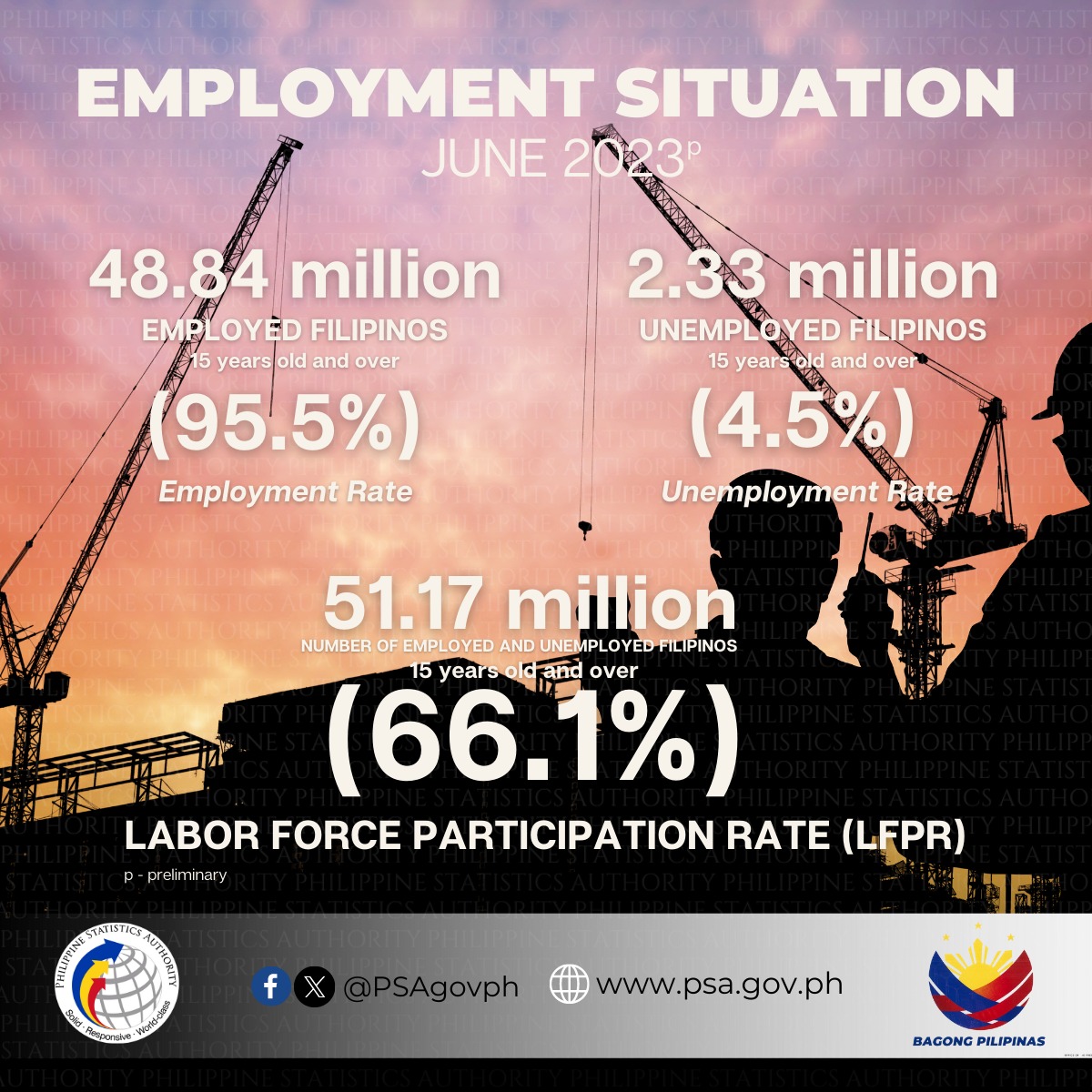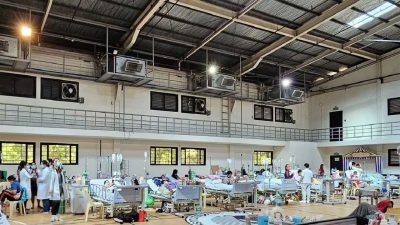MANILA – The number of unemployed Filipinos went down to 2.33 million in June from 2.99 million in the same month last year, data from the Philippine Statistics Authority (PSA) showed.
Preliminary results of the June 2023 Labor Force Survey released on Wednesday showed that the unemployment rate during the month was at 4.5 percent, down from the 6 percent estimate in June last year.
It was, however slightly up from the 4.3 percent unemployment rate in May this year, which was attributed to the increase in labor force participation.
“Based on our data, there were 741,000 (additional persons) who participated in the labor force. Most of them were not able to find jobs,” National Statistician Dennis Mapa said in a briefing.
Mapa said the Labor Force Participation Rate (LFPR) in June 2023 was estimated at 66.1 percent or about 51.17 million Filipinos aged 15 years and higher who were employed or unemployed, up from 50.43 million in May and the 49.58 million recorded in June 2022.
Meanwhile, the employment rate in June was estimated at 95.5 percent, higher than the reported 94 percent employment rate in the same month last year, but slightly lower than the 95.7 percent in May 2023.
The number of employed persons was 48.84 million in June 2023, up from 46.59 million in June 2022 and 48.26 million in May this year.
Mapa said the top five major industries with the largest increase in employment include accommodation and food service activities, agriculture and forestry, wholesale and retail trade, other services, and public administration and defense.
The number of underemployed, or those who expressed the desire to have additional hours of work in their present job or to have an additional job or to have a new job with longer work hours, stood at 5.87 million, translating to an underemployment rate of 12 percent, down from the 12.6 percent in June 2022 but up from the 11.7 percent in May this year.
In a statement, the National Economic and Development Authority (NEDA) assured that the government remains committed to labor upskilling to improve employability and maximize the benefits of the country’s demographic dividend.
NEDA noted that the employment rate among the youth was estimated at 90.1 percent or 6.45 million, which is higher than 88.2 percent in June 2022.
Youth employment refers to individuals between 15 years and 24 years who are part of the labor force and are employed.
“As the number of young workers continues to expand, the Marcos administration is exerting efforts to focus on training and upskilling to improve their employability for high-quality and high-paying jobs,” NEDA Secretary Arsenio Balisacan said.
Citing the results of the 2022 National Demographic and Health Survey conducted by the PSA, NEDA said it was found that the total fertility rate of Filipino women aged 15 years to 49 years declined from 2.7 children per woman in 2017 to 1.9 children per woman in 2022.
This change leads to an overall increase in the working-age population (15 years to 64 years of age) over time, the so-called demographic transition.
NEDA said when this is accompanied by higher investments in human capital and more high-quality job opportunities, this translates to a demographic dividend.

Chapter 4 of the Philippine Development Plan 2023-2028 outlines recommendations for equipping the young Philippine workforce with the necessary skills to enhance the income-earning potential of Filipino workers.
This indicates that promoting further investments in technical and vocational education and training centers, digitalization, and innovation facilities is crucial for improving the skills and competitiveness of the Philippine workforce.
Balisacan said this is critical, considering the entry of new and disruptive technologies.
“Modernizing training and vocational education facilities, as well as enhancing educational qualifications, competencies, and skills, are necessary to respond to the emergence of new demands for competencies and skills. These demands are a result of economic and technological transformations brought by emerging technologies in the market, such as artificial intelligence,” he said. (PNA)







